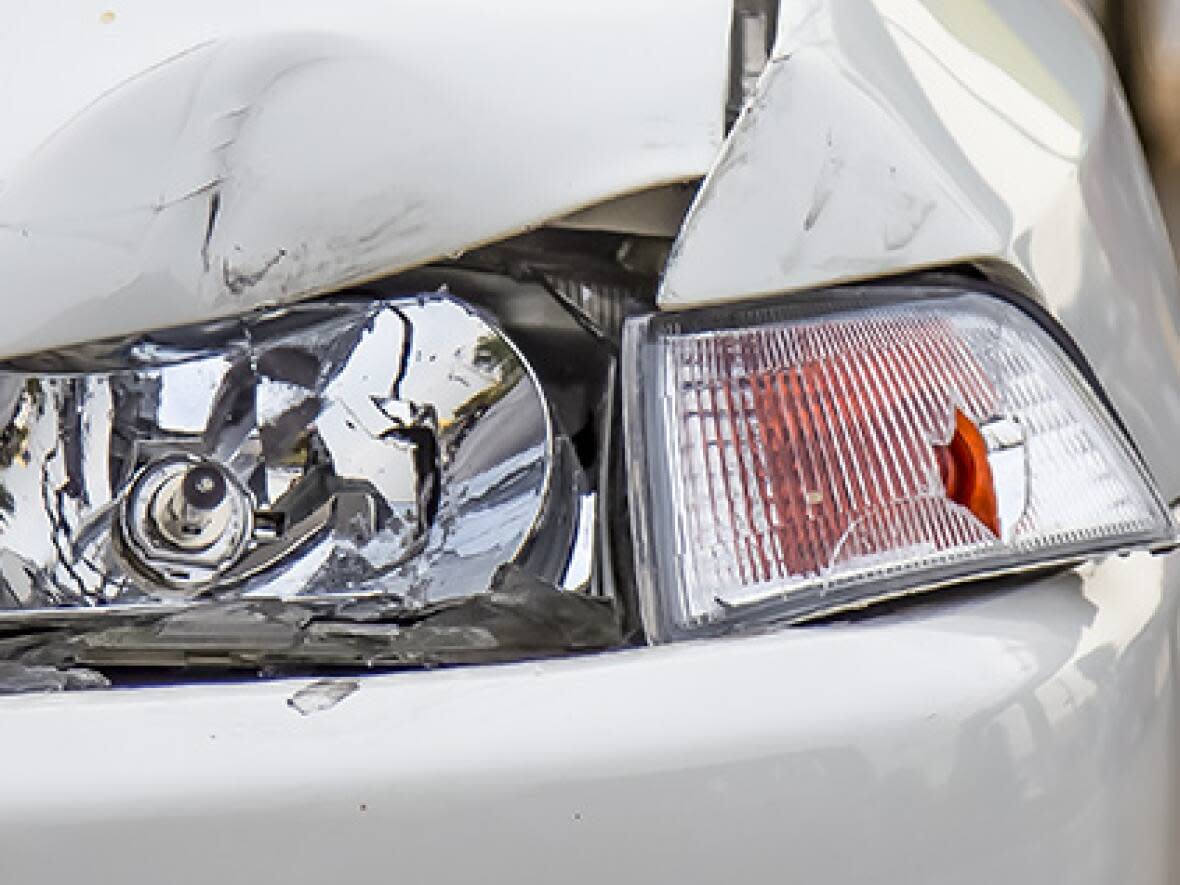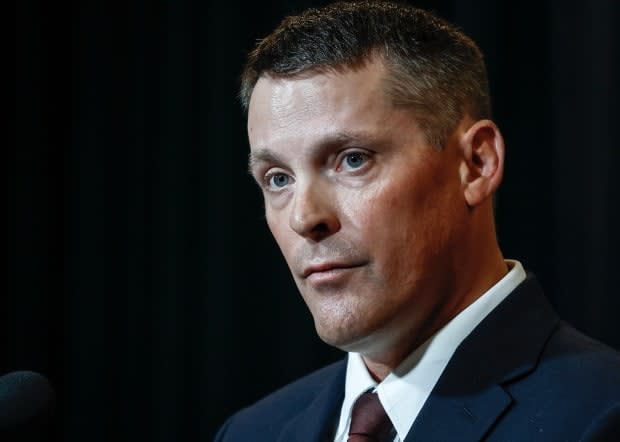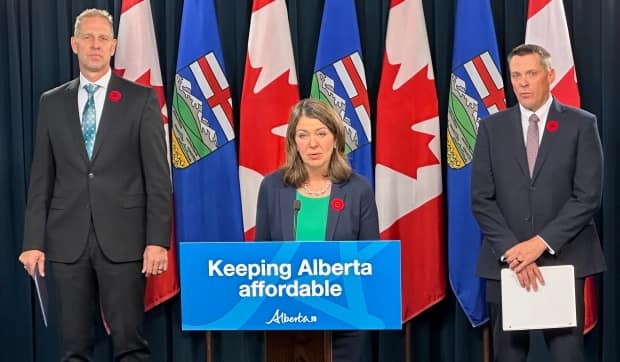Auto insurance overhaul likely for Alberta. How far will UCP go?

In a day thick with competing actuarial interpretations and estimates of car insurance models, one particular figure made Finance Minister Nate Horner's ears perk up last Monday.
Five per cent.
That's the proportion of Albertans' average disposable income that now goes to auto insurance premiums, a provincial consultant told Horner and a room full of other government officials, insurers, lawyers and other stakeholders at a summit on auto insurance reforms.
Previous reports, a decade or more ago, pegged the proportion at 2.7 per cent. But premiums have taken a much bigger bite out of Alberta bank accounts in recent years, racing from an average of $1,316 in 2018 to an estimated $1,670 last year — up by one-quarter, in only five years.
Premier Danielle Smith's government has capped rate increases for good drivers, but Horner acknowledges that's a lid on a boiling cauldron of rising repair costs, higher claim values and an outsized car-theft problem.
Tinkering no more
Something's gonna blow, be it insurance firms bailing on an uneconomic province or premiums surging again if Horner lifts the cap without tending properly to that bubbling brew of factors.
Add in a premier with a yen for bold, major changes — a drawn-and-quartered Alberta Health Service and an Alberta Pension Plan, anybody? — and you have the most fertile environment for a big auto-insurance system redesign in years, rather than the tinkering governments have done in years past.
"I think we have to do more. That's what the premier's asked us for," Horner told CBC News in an interview this week, after the private summit his ministry organized as part of promised consultations.
Reports the government commissioned even looked seriously at the insurance solution that's long seemed a third rail for Alberta conservatives — public auto insurance like they have in Manitoba, Saskatchewan and British Columbia.
And what did those reports say? Full coverage could cost roughly $765 less per year under a public regime like Alberta's western neighbours have, according to one study by Oliver Wyman.
Why? You create larger insurance pools, centralize the staff, simplify claims and eliminate the need for corporate profits.

With the cost of living high on Albertans' minds, that's arithmetic Horner can't disregard.
"The way to maximize savings is to create the monopoly," the minister said about a government-run system. "If you go part way, you always diminish savings."
But premium savings isn't the only part of this complex picture Horner is looking at, as steward of Alberta's finances. The risks when the insurance market dips would suddenly all be assumed by government.
"We're not going to go all in for the ratepayer potentially at the expense of the taxpayer," he said.
In addition to those risks, a companion report by the Nous Group lays out the costs of the province taking over auto insurance. That includes nearly $3 billion in startup expenses, and up to 5,650 jobs lost in private insurance, brokerage and law firms (though that's offset by up to 5,000 new jobs at the public insurer).
Horner readily cites these figures when asked about the public insurance option. The insurance sector, preferring to not lose the business of more than three million Alberta motorists under a government takeover, has pushed back by casting doubt on the Wyman report's estimates. But at the same time, the Insurance Bureau of Canada has hailed the same report's observations that legal costs are a massive driver of high premiums in Alberta.
Which points to another major reform that Horner appears less wary of — taking the court process out of auto insurance injury claim settlements. This is the other way that provinces with public insurance lower their premium costs: instead of having a litigation-based system that allows collision victims to sue at-fault motorists (and their insurers), other jurisdictions have a "no-fault" system, where there's no option to sue and claims are fully handled by one's own insurer.
Horner notes that taking away Albertans' right to sue for injuries would be controversial. But he also says there's the advantage of "prompt care" for accident victims in a less adversarial claim-resolution system.
No fault, but no monopoly
The Smith government also asked Oliver Wyman to cost out moving to Manitoba's no-fault claims system, but keeping private insurers instead of a public monopoly. That would deliver about half the premium savings of fully adopting Manitoba's public no-fault system, but without the costs of Alberta establishing a new bureaucracy. (Ontario mixes private insurers and a no-fault system. It's also the only province with higher average premiums than Alberta.)
That, the insurance sector can get behind.
"If the government decides to move to a no-fault model, we want to work with them to ensure that can be delivered in a way that makes it more affordable for drivers, while improving the level of care they receive," IBC's Aaron Sutherland told CBC News.
Jackie Halpern of the Alberta Civil Trial Lawyers Association warns that no-fault advocates use lawyers as a "scapegoat" for other cost pressures in the damage and repair realms. She also warns the no-fault system doesn't punish bad drivers, and leaves their victims without full recourse to sue, instead being subject to an inflexible Workers' Compensation Board-like set of centrally decided remedies.
Also, moving to no-fault insurance would kill up to 800 legal jobs, the Nous Group study notes.

The last big study the UCP government commissioned on insurance reform in 2020 recommended replacing Alberta's system with a no-fault compensation model, calling it "the optimal and only solution to produce long-term stability to auto insurance pricing."
But then-finance minister Travis Toews and premier Jason Kenney weren't willing to go there, opting for smaller adjustments that ultimately failed to stem a wave of big premium hikes.
If you're assuming the Alberta NDP stoutly advocates for government-run insurance, you'd assume wrong, according to finance critic Samir Kayande. The NDP opposition is mostly concerned about the government hurtling toward a no-fault system in which insurers do well and injured victims don't.
The party's position could shift with a new leader. At least one candidate, Kathleen Ganley, has pledged to bring in public insurance, and others may embrace it as an affordability measure.
Going big, or going slow
The UCP premier, meanwhile, apparently remains open to going that far against conservative type.
"I would say with Premier Smith, I don't think there's any sacred cows," Horner said. "As finance minister, I have a lot of them."
He noted, with a tinge of wariness, all the new provincial agencies Smith has created or proposed, including one for drug recovery research and another that might take over natural gas power plants.
"You know, we've talked about a lot of potential Crown corporations and they come at a cost, both setup and operating," Horner said. "I'd like to take it slow."
But Smith hasn't been shy about big overhauls of another complicated and increasingly costly system, the electricity market. Doing the same with this mandatory cost burden for drivers could be its logical companion.


